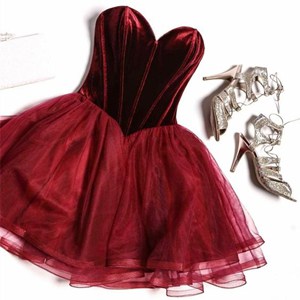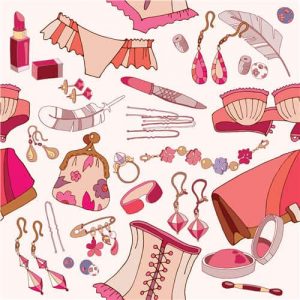Corsetry has been in practice for ages, but the corset piercing has a contemporary origin and came into practice with the development of body piercing industry during the late 1990’s. Corset piercing, the most famous fashion nowadays, is linked with aesthetics especially the fetish aesthetics and lewd behavior, and most wearers of corset piercings are ladies.
Women wear corsets along with the corset piercing, and corset piercing is a form of body modification which is temporary in nature and is very alluring. However, the corset piercing is challenging to keep clean as any skin piercing so that it may lead to infection, and even cause unsightly scars. You can follow me to understand the chest piercing before deciding to use it.
What is Corset Piercing?
Corset piercing is a form of body piercing, comprising of numerous surface piercings with one, two or more number of rows which are bilaterally symmetrical or piercing carried out according to the length of the area with the vertical space existing between the piercings. Most of them are left and right punctures, which look like corsets tied to the body.
Some designs are spherically applied or are in a spider-web pattern. Chain, lace or ribbon is threaded with the help of piercing in a similar pattern which is worn by the ladies throughout history.
Of course, corset piercing can be carried out on the large surface area of the skin but most commonly done on the legs, neck, arms, sides of the torso and usually on the back. Once those wounds have healed, they can be tied and tightened with straps. The creativity with corset piercing appeals the individuals. Occasionally, corset piercing is also carried out from one body part to another one such as between the thighs by joining the two legs. Generally, this decoration can be placed on any part of the body as long as the skin is flabby.
Two Main Types of Corset Piercing
Because of the difficulties and risks associated with permanently healing a single surface piercing, the corset piercings most people choose are temporary.
1. Temporary Corset Piercing
The kind of temporary corset piercing may be done for a photoshoot, for fetish events or for promoting a business of piercers by corset piercing for advertising purpose or for photographing a portfolio. Temporary corset piercings are also done for BDSM activity. Ladies wear temporary corset piercings by lacing them with rope, ribbon or chain. Bell closure rings are the type of jewelry worn in temporary corset piercing. However, when corset piercing is done for an event or photo shoot, the piercer makes use of hypodermic needles rather than the jewelry. In this situation, the needles are removed as soon as the event is over.
Temporary corset piercings last for a short period, i.e., for one week or two weeks even if the jewelry is left after an event or photo shoot. Temporary corset piercing uses Ball Closure Ring which applies stress on the skin which results in rejected piercing which is then removed for a week or two after it is being done. It may be the best choice for your “special occasion.”
2. Permanent Corset Piercing
Clients sometimes request for permanent corset piercing although it is not normal, this is possible. Different forms of jewelry are used for continuous corset piercing. There are many risks and difficulty associated with the permanent corset piercing healing surface that’s why temporary corset piercings are preferred.
The rule of thumb for permanent corset piercing is to avoid using CBR jewelry because they create pressure over the skin by pulling and moving the ribbons that connect the rings which inhibit the healing phase and results in migration and rejection of rings. For permanent corset piercing another type of jewelry is utilized referred to as doorknocker or slave barbell. A slave barbell comes with a ring attached to one or both the ball ends which causes the stress on barbells instead of the skin. Slave Barbell results in fewer chances of rejection with increased chances of healing along with staying put.
Permanent corset piercings are attempted successfully with the help of surface bars. The success rate with Tygon tubing and Teflon is slightly less than the surface bars but of them are flexible and show movement with the body. Permanent corset piercings are used for lacing. Do not apply laces until the initial healing phase is over. If you use laces immediately, damage may occur due to the tension created by the laces which increase the risk for complete migration or total rejection. Avoid wearing the thongs at all times.
Corset Piercing on Different Body Parts
1. Chest Corset Piercing
You can use colorful ribbons for giving a fantastic look in a bilaterally symmetrical chest corset piercing but remember to take extra attention on your chest as it’s hard to keep clean.
2. Lower Back Corset Piercing
Place corset piercings on the lower back in two rows which resemble a corset when you lace it together, which are for people who want to stand out from the crowd.
3. Leg Corset Piercing
Several piercings are placed on the back or front of the leg to create a unique fashion statement, especially for individuals who wear shorts or short skirts. This kind of undeniably sexy and unique piercing can also be carried out on feet.
4. Side Corset Piercing
One or both the sides of the torso can be used for placing a corset piercing for those looking for a unique and sensational body art form, such as extremists.
5. Neck Corset Piercing
Piercing can be carried out on any part of your neck which may include the nape. However, it is not that spectacular when compared to the back piercing, but you can try it.
6. Arm Corset Piercing
Multiple perforations are done during the piercing either on the wrist or the shoulder. It is a less aesthetically pleasing piercing.
Besides, some people may have a direct corset piercing to the ribs. It hurts to think of it, but with a tattoo, it ‘s a perfect combination.
Corset Piercing Pain & Procedure
It is a complicated piercing process which is avoided by many piercing salons and performed in venues like tattoo shops. It’s imperative to find the licensed piercing studio and get the piercing done by them.
Before they start the procedure decide the number of corset piercings you want on your body. In the process, your artist will thoroughly clean the area with the cleaner of their choice and then mark it as an area. In most cases, these are hand-pierced-meaning there are no clamps. Usually sterilized hollow needles are used to do the piercing on the desired locations after cleaning it with an antibacterial solution.
Have an intense threshold for pain if you want to undergo the process of corset piercing to avoid getting hurt. However, corset piercing is a type of surface piercing, many perforations during the process result in extreme pain, redness, bruising and swelling irrespective of the piercing location.
Corset Piercing Aftercare
In most cases, these leave some scar tissue, meaning that proper procedures and aftercare ( even if only for a few days ) limit the number of visible scars. While corset piercing like other body piercing types requires some time to complete the healing, so you need to follow the full instructions for aftercare mentioned by your piercing artist.
You may feel a lot of related pain and itching during this period. And the piercing is eventually done by lacing, so lacing is not recommended until the initial healing period has subsided. If you use a lace right away, it can cause excessive tension and may increase the chances of the hole moving or being rejected altogether.
- Take multivitamins at least 2-3weeks before getting pierced.
- Eat healthy diets to heal the piercing sites correctly.
- Two to three hours after getting your piercing the ointment which was applied dries up. At this point clean your hands with antibiotic soap and wash the Piercing site with Sea salt soak. Implement the cream after every 3-4 hours on that day and the next 20-30 days. Great precautions and high hygiene level should be maintained around the pierced area. The best method to take care after corset piercing is to dip in a saline solution. It feels gentle on the skin, reduces irritation and itching, prevents scarring, assists in healing, and has profoundly efficient antiseptic properties. Moreover, rinse the pierced area properly with water to promote skin healing.
- Avoid using anti-bacterial soaps on such piercings as it is harsh and kills the skin cells instead of healing them. These antibacterial soaps are safe for maintaining the personal hygiene but not for pierced sites.
- Avoid alcohol products as it may react harshly for the fresh piercing.
- Another method of corset piercing aftercare includes the use of professional aftercare solution. By the time this piercing is in the healing phase, it is advisable to apply cleansing solution after every three to five hours. Wash your hands before you touch any piercings. The healing stage takes around 12-16 weeks.
- Avoid taking a bath in dirty water along with it avoid removing the piercing when in the healing phase. Avoid getting corset piercings during summers as there are high chances of infections and allergies.
Anyway, if you have any questions, contact your artist and doctor as soon as possible for comfort or advice.
Conclusion
Corset piercings can never become mainstream they will always remain as contemporary due to which it is unique and fascinates the individuals. If you want to pierce permanently or on a temporary basis so make sure that your piercer is highly skilled and certified. We advise this for people who have an intense pain threshold. During the healing phase, corset piercing requires constant vigilance by the wearers to avoid any damage from clothing, hair, blankets, exercise, bedding and much more. This sort of piercing may leave a permanent scar.
Body piercing is carried out in tattoo shops, and it depends on the state for license requirements. Some countries prefer little training while others prefer no training at all, but the minimal condition of blood-borne pathogen training sessions is necessary to file a permit application. The cross-contamination of blood-borne pathogens is not a joke, and you deserve an artist who values your health as much as you do.


